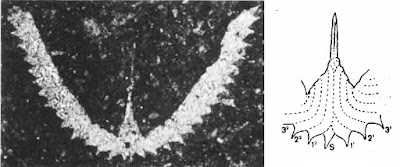Lipinia is a genus of about thirty known species of small skinks (reaching at most a snout-vent length of nearly six centimetres) found in south-east Asia and the islands of the tropical Pacific. Even now, the genus remains difficult to clearly define with its species having a fairly unspecialised habitus. It belongs to a group of genera in which the lower eyelid usually has a transparent window, presumably allowing the skink to retain some modicum of vision even with its eyes closed. Within this cluster of genera, distinguishing features of Lipinia include smooth scales, slightly to strongly expanded subdigital lamellae, and the loss of the postorbital bone. They often show a strongly striped dorsal pattern with a pale mid-dorsal stripe anteriorly (Shea & Greer 2002; Poyarkov et al. 2019). Species are diurnal and may be arboreal, semi-arboreal or terrestrial in habits (terrestrial species are quite reclusive). The clutch of eggs laid by females is usually quite small, two at most (one for each oviduct). In a number of species, one of the oviducts is vestigial and only a single egg is laid.
The most widespread species in the genus is the moth skink Lipinia noctua, found over a range extending from eastern Indonesia to the Pitcairn Islands (I have no idea why it is called a 'moth skink'). It is believed to have originally been native to New Guinea before spreading over its current range in association with humans, an inadvertent stowaway in ocean-crossing boats and canoes*. It was doubtless assisted in this spread by its ovoviviparous habit: that is, rather than laying eggs in the manner of related species, eggs are retained in the mother's body until young can be born free-living. So thorough was the transmission of this little skink by humans that its genetics have been investigated in relation to the settlement of the islands (Austin 1999). They support a picture of rapid eastward expansion; when Polynesian explorers discovered the islands that would eventually become their people's home, the skinks were there discovering them too.
*A note on terminology: though the manned craft used by the initial settlers of the Pacific islands are commonly referred to in English as 'canoes', these were not just the small craft many people associated with the term. Polynesian waka/vaka/etc. (the exact term, of course, varies linguistically) can be sizable ships, twenty metres or more in length, with commensurately sizable crews. Those used for long ocean crossings would have double hulls or outriggers and would largely be propelled by sail rather than oars.
REFERENCES
Austin, C. C. 1999. Lizards took express train to Polynesia. Nature 397: 113–114.
Poyarkov, N. A., Jr, P. Geissler, V. A. Gorin, E. A. Dunayev, T. Hartmann & C. Suwannapoom. 2019. Counting stripes: revision of the Lipinia vittigera complex (Reptilia, Squamata, Scincidae) with description of two new species from Indochina. Zoological Research 40 (5): 358–393.
Shea, G. M., & A. E. Greer. 2002. From Sphenomorphus to Lipinia: generic reassignment of two poorly known New Guinea skinks. Journal of Herpetology 36 (2): 148–156.



























